Around the globe, stretches of sand meet the ocean in landscapes that captivate and astonish. These spectacular sites, whether golden, white, pink, or even green, are testament to the earth’s immense diversity and geological wonders. These aren’t your typical vacation hotspots; these beaches boast unique features that defy expectations and stretch the imagination. From the United States to Croatia, each destination unfolds like a geology lesson, revealing a new aspect of our extraordinary planet. These peculiar beaches, each striking in their own right, will incite both awe and curiosity in equal measure.
Contents
Glass Beach, California
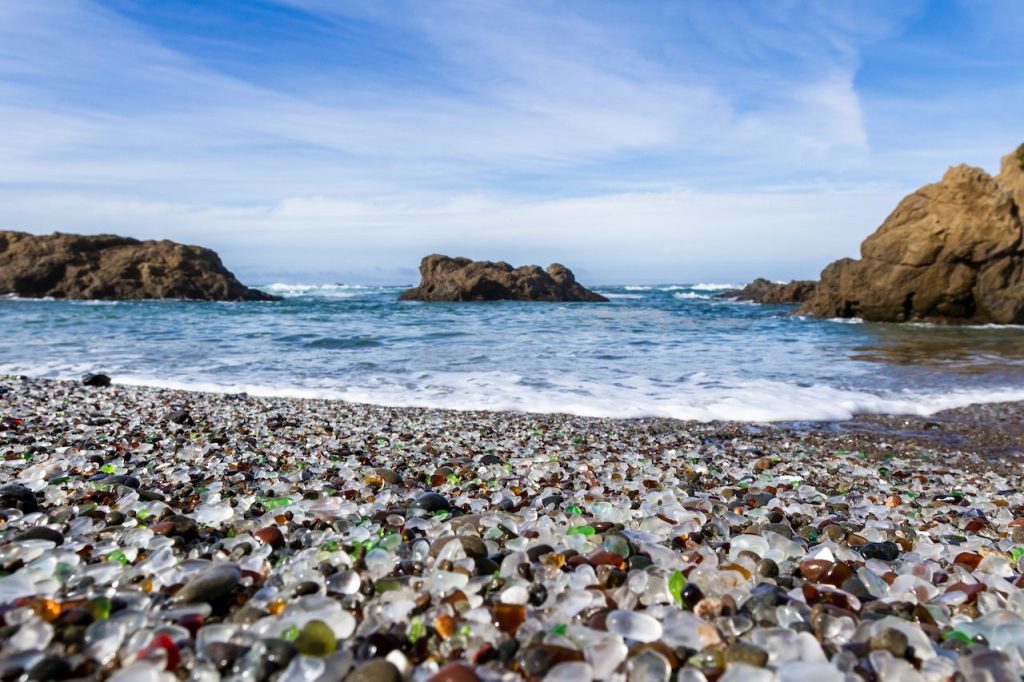
Tucked away in Fort Bragg, California, Glass Beach owes its uniqueness to a history of waste dumping, followed by nature’s relentless recycling. From the early 20th century until 1967, local residents discarded vast quantities of household waste over the cliffs into the sea. The crashing waves broke down everything except for the glass and pottery, which were worn down into small, smooth, colored pieces. Now, instead of finding typical sand underfoot, visitors marvel at millions of smooth shards of glass, gleaming in the sun in hues of green, blue, and brown.
Remarkably, what was once a discarded eyesore has become a testament to the regenerative power of nature. The glass fragments, ceaselessly churned by the ocean, have transformed a dumping ground into an unexpected tourist attraction. Today, Glass Beach is a protected part of MacKerricher State Park, and while visitors are free to marvel at the colorful spectacle, taking any of the glass home is forbidden.
Papakolea Beach, Hawaii
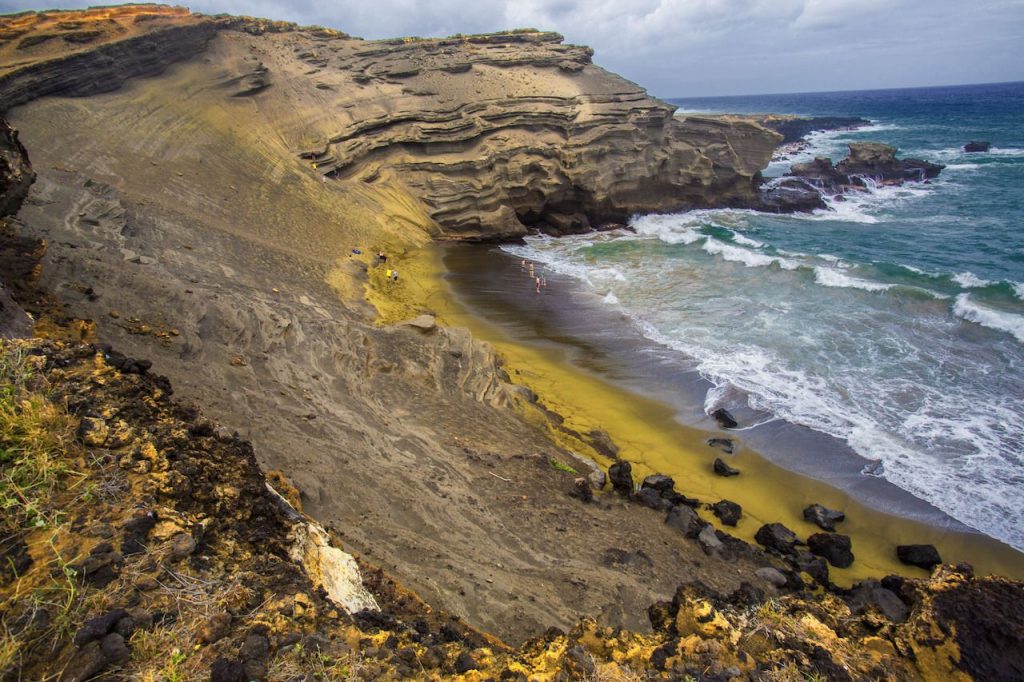
In the southernmost district of the United States, on the Big Island of Hawaii, lies an unusual gem. Papakolea Beach, one of the world’s few green sand beaches, is a marvel that seems to defy the traditional beach aesthetic. Its sand isn’t the typical white, gold, or black associated with Hawaiian beaches; instead, it’s a deep, olive green, thanks to a rich concentration of the mineral olivine.
These olivine crystals come from the cinder cone of an extinct volcano that erupted some 50,000 years ago. Over time, the ocean’s relentless waves eroded the cone, leaving behind the heavier olivine crystals to form a beach. Getting there requires a bit of effort—a challenging hike or a local guide—but the reward is the spectacle of a rare geological phenomenon.
Zlatni Rat Beach, Croatia
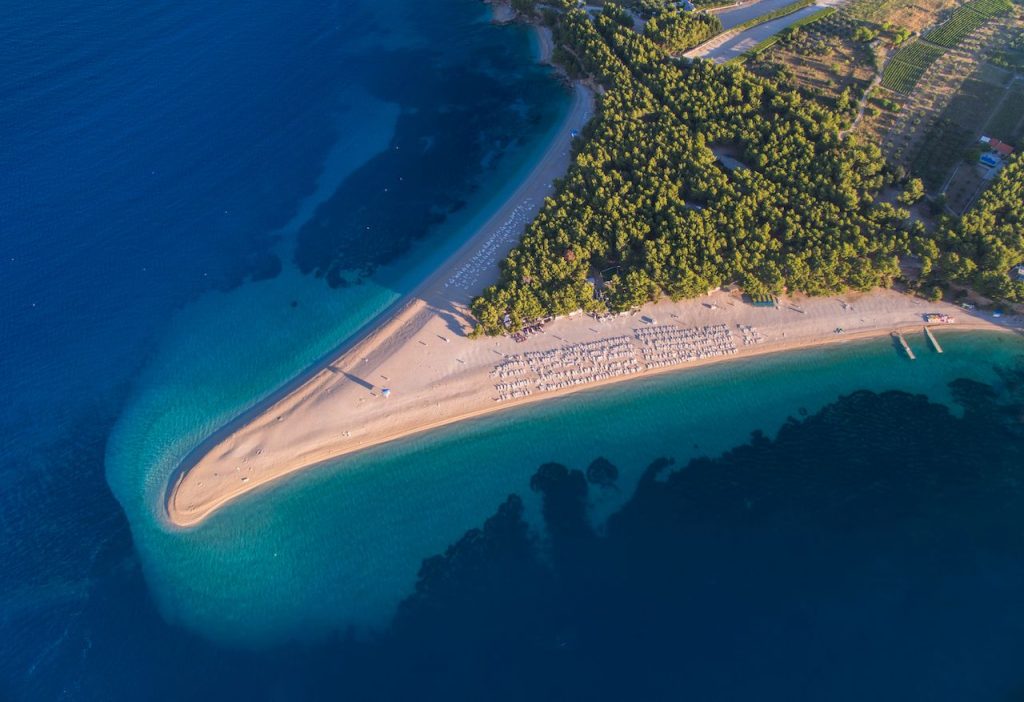
Situated on the southern coast of the island of Brac in Croatia, Zlatni Rat Beach, also known as the Golden Cape, is a unique landform that never stays the same. It’s a spit of land that stretches into the sea, with a shape that shifts according to the wind, tide, and currents. Composed of fine pebbles and appearing to extend into the turquoise water like a long, golden arm, this beach is an ever-changing spectacle that consistently defies cartography.
Aside from its shape-shifting nature, Zlatni Rat Beach also draws visitors with its vibrant coastal activities. The summer winds make it an ideal spot for windsurfing, and the pine grove at the base of the spit provides respite from the sun. Visitors are also treated to a panoramic view of the Adriatic Sea, making Zlatni Rat not just a beach, but a dynamic and captivating destination.
Diamond Beach, Jokulsarlon, Iceland
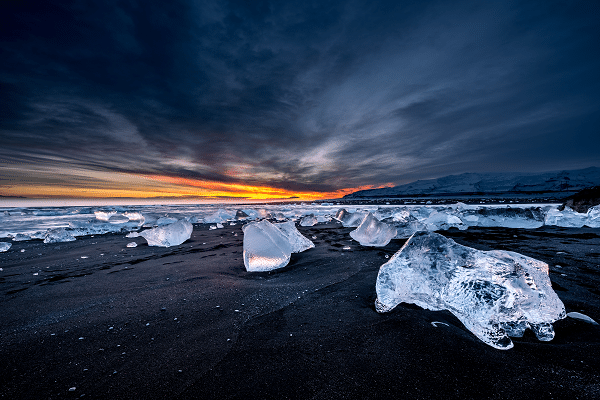
On the coast of Iceland, right next to the Jokulsarlon Glacier Lagoon, one can find a beach that shines with a different kind of treasure. Diamond Beach, aptly named for its scattered “diamonds” – icebergs that have broken off from the glacier, washed into the lagoon, and then carried out to sea, only to be washed ashore again. The beach, with its black volcanic sand, serves as a perfect canvas for these glistening chunks of ancient ice, which range in size from small gems to massive jewels.
This spectacle is a compelling manifestation of the circle of water – from solid ice to liquid and back again. The ethereal beauty of Diamond Beach is a stark reminder of the ever-changing nature of the earth’s landscapes. Against the stunning contrast of black sand and clear, shining ice, it’s impossible not to be captivated by the majestic show of nature’s forces at work.
Xi Beach, Greece
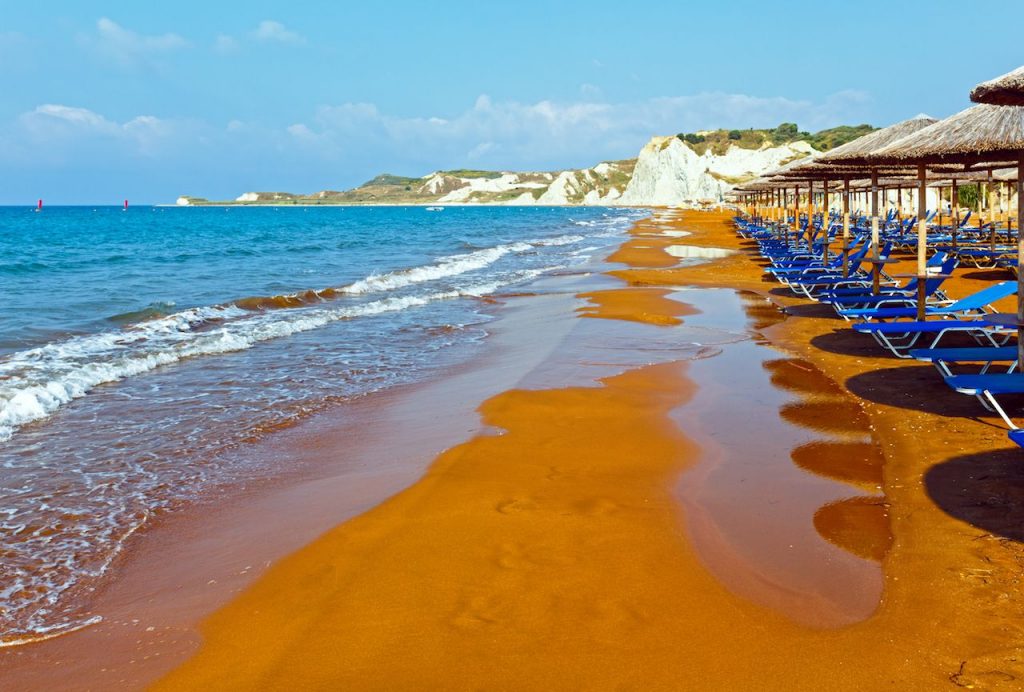
The Ionian island of Kefalonia in Greece houses a marvel that combines geology and beauty in a striking way. Xi Beach is renowned for its reddish-brown sand, a stark contrast to the typical white or golden beaches usually found in the Greek islands. Its dramatic cliffs are composed of a naturally occurring white clay, which many bathers apply as a skin treatment, adding an unconventional spa element to a day at the beach.
Xi Beach also offers warm, shallow waters, making it a family-friendly spot despite its unusual aesthetics. The rusty-red sand, the white clay cliffs, and the deep blue sea present a colorful tableau that lends itself to unforgettable photographs. Visitors come for the unique beauty and stay for the tranquil atmosphere and the delightful, warm Mediterranean waters.
Bowling Ball Beach, California
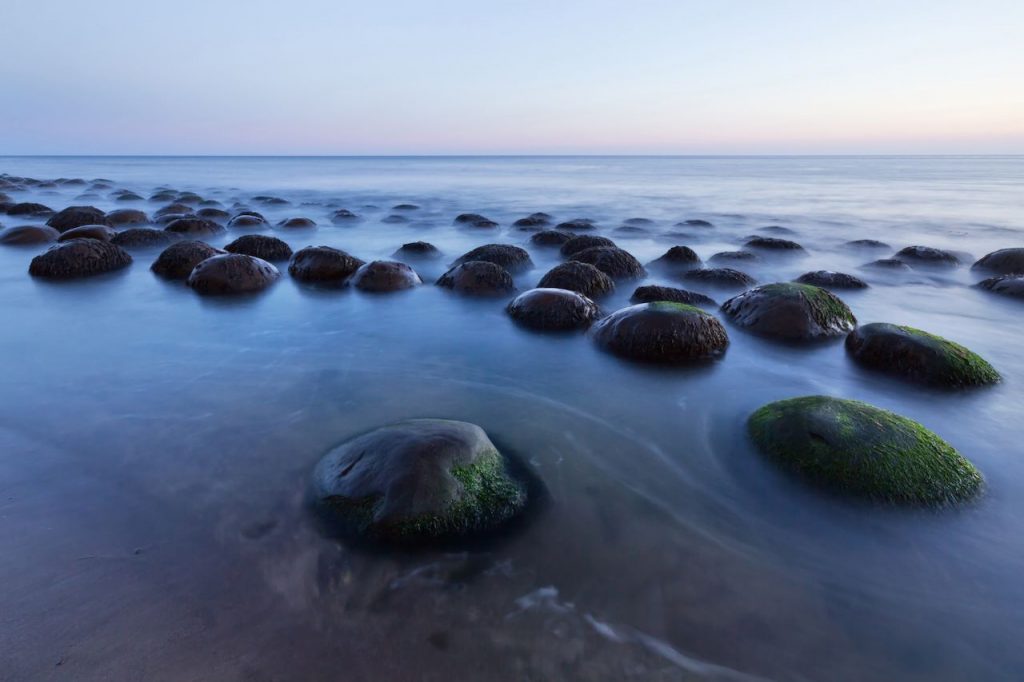
Lining the shores of Bowling Ball Beach in Mendocino County, California, lie mysteriously uniform, spherical boulders. These natural formations, reminiscent of bowling balls, become visible at low tide, creating an eerie, out-of-this-world landscape. Created through a geological phenomenon known as concretion, these boulders are formed when mineral cement binds grains of sand or stone into larger masses.
These peculiar stone spheres have made Bowling Ball Beach a photogenic curiosity. Onlookers have the best view at low tide when the ocean recedes to reveal the spheres, which seem to have been carefully and impossibly aligned. Observing this peculiar beach offers a tangible, if somewhat baffling, lesson in the slow, methodical artistry of erosion and sedimentation.
Hyams Beach, New South Wales
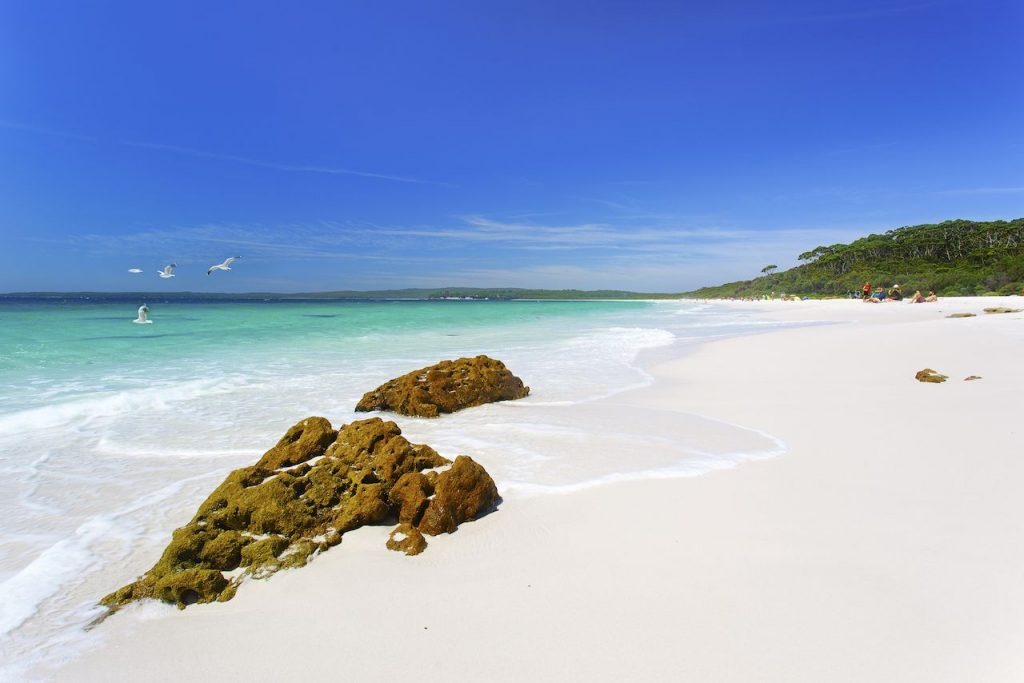
On the shores of Jervis Bay, New South Wales, Australia, lies Hyams Beach, renowned for its strikingly white sand. Recognized by the Guinness World Records as having the whitest sand in the world, this beach offers a landscape that can seem almost surreal. The stark whiteness of the sand creates a dramatic contrast with the clear turquoise water and the surrounding verdant bushland.
Hyams Beach isn’t just about the sand. The area is also part of Jervis Bay Marine Park, making it an excellent spot for snorkeling and dolphin watching. The surrounding bushland is home to various native wildlife, adding to the unique appeal of the location. Hyams Beach, with its ultra-white sand, vibrant wildlife, and pristine waters, embodies an unusual yet enticing beach experience.
Conclusion
These beaches, each with their own unique features and stories, showcase the incredible diversity and wonder of the planet’s landscapes. Their distinct colors and structures challenge the typical beach stereotypes, offering instead a rich tapestry of geological wonders that intrigue and inspire. Despite their geographical differences, these beaches all share one trait: they defy the norm and present a stunning spectacle that continues to captivate and draw in curious travelers. May the uniqueness of these strange-looking beaches serve as a reminder of the immense beauty and variety found in every corner of the world.


